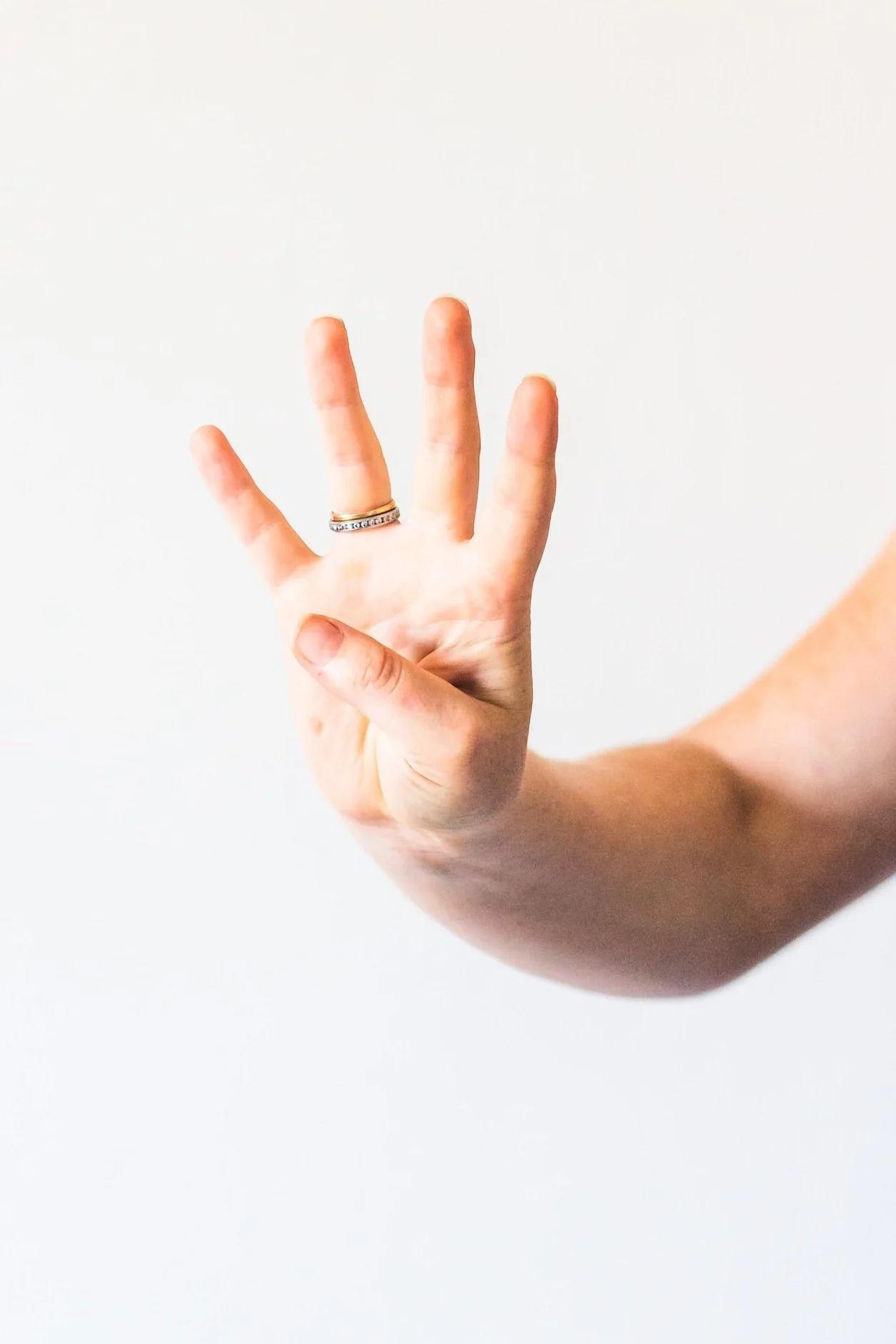Feel Less Stressed with these 4 Ways to be Mindful at Work
Shifting client deliverables, constant disruptions, and absentee managerial support are a few factors that lead to stress and burnout.
When you are in an environment that supports this type of workplace culture, it can be tempting to keep going without pausing for thought or reflection. By taking the time to pause and refocus on what matters most, you are more likely to better carry out tasks at work with greater effectiveness and efficiency.
Let’s talk about four ways to be mindful at work and reduce the many workplace stressors
4 Ways to be Mindful at Work
If you are a leader of a company, the idea of working on mindfulness with others can seem daunting. The first thing to remember is that you are not alone. There are many organizations that have made mindfulness a priority and have had success in improving the health and well-being of their employees. But what you must remember is that as a leader, it always starts with you.
We have an in-depth guide on what workplace mindfulness is and how you can benefit from mindful meditation at work, which will help you start off your mindfulness journey In support of reduced stressors and healthier workplace cultures.
In the meantime, let’s discuss the four ways you can be more mindful at work and inspire greater wellness with your team.
4 Ways to be Mindful at Work
Focus
Create space
Be self-aware
Reposition
Image: Unsplash
Focus: Reduce distractions
The first thing to consider when contemplating how to be mindful at work is to address what prevents you from being mindful or attentive and thus causing a great deal of distraction. The idea is to reduce those distractions as one of the ways to feel less stressed at work and focus better on client deliverables.
One strategy is to create a space where you are able to focus solely on what you are doing. This means keeping your phone and other devices out of sight and out of mind. Turn off any popup notifications that aren’t necessary like your phone ringer or Twitter alerts.
Set focus time and be clear with your team and colleagues that you are unavailable during these set hours. This means blocking your calendar as busy or unavailable and if your schedule allows, make this a regular weekly or daily routine (e.g.) Every Friday afternoon from 1pm-4pm is focus time. People leaders can set a great example by implementing set boundaries for team and client meetings.
Example email:
Hello Everyone,
At our last team meeting you share how tired and stressed you are. This is of great concern to me and I am committed to making this a healthier workplace. While it will take some time to come up with a plan, I have one strategy that I am implementing today. Effective immediately, all meetings with internal stakeholders shall not be scheduled before 10am PT. I recognize that you already have meetings in place so don’t make more work for yourself by rescheduling these commitments but going forward, please keep this 10am time-frame in mind. I’d encourge you to use this ‘no meeting’ time to focus uninterupted and prepare for the day ahead. This is one of a number of tactics we will be discussing to reduce your stress and ensure we create a sustainable and healthier workplace.
Remember, attention and focus is a choice. It requires planning and likely will feel uncomfortable. Once you are settled into your newly formed habits, you’ll be glad you implemented measures to reduce distractions and likely you’ll feel more accomplished and productive.
2. Create space: Reward yourself with breaks
One of the primary goals of mindfulness is bringing you closer to yourself; this means understanding your body and its needs. For instance, if you are constantly in your head, you may be overworking yourself. You don't want to fall into this trap, as it could lead to chronic burnout and even depression. The hustle culture has ruined breaks for employees. There is a sense of guilt associated with pausing to recharge. You might feel like you can't take any time off because it would be irresponsible. In contrast, having that space where you are not doing anything but simply being is really important.
Breaks from work, do not need to be long. It could be as simple as taking a walk or sitting down for five minutes without focus on work. This will give your brain time to rest and recharge. Another strategy is the 20-20-20 rule which means every 20 minutes, take 20 seconds to look away from your work and if you are at a computer screen, look 20 feet away. You might bring your gaze to a piece of art on your wall or stare out the window. While the intention of this practice is to reduce eye strain it is a simple technique for working short breaks into your day. Surely you can take 20 seconds before jumping on your next call.
For those who feel they need something more guided, mindful meditation is a great tool to channel your energy towards something that soothes your mind.
3. Be self-aware: Be conscious of your actions
“Between stimulus and response there is a space. In that space lies our freedom
and power to choose our response. In our response lies our growth and freedom.”
~ Viktor Frankl
Viktor Frankl was a Viennese psychiatrist and a concentration camp survivor during World War II. He learned to create space between the horrific situations around him and began to focus on the bigger picture. While this did not change his circumstances, it allowed him to think with greater consciousness and consider his choices and thoughts about the world around him. In short, he became more self-aware.
Self-awareness is one of the most crucial aspects of mindfulness. After all, it is the first step toward self-acceptance and personal growth. Self-awareness is about being conscious of yourself in order to be more present with other people. If you are not aware of your actions, it is hard to change them. In short, if you don't know what you are doing, how will you be able to do it better?
Becoming self-aware means that you pay attention to the way you think and act and take responsibility for your own actions. This can be a challenge, especially when we are under pressure and are focused on achieving results fast. It is easy to get lost in the day-to-day activities of our work but this is exactly what leads us to take action without thinking about it first. To be mindful, you must stop before you engage in an action, take a breath and ask yourself:
"how am I feeling right now?"
"am I about to respond from my habitual ways of thinking or is this a conscious decision?”
“is this the best course of action?”
You may be surprised at how often these simple questions can help you make better decisions in the moment. That small pause can allow you to access the rational side of your brain, which is responsible for asking the “why” of things. You will find that more often than not, asking the “why” behind things can actually help you become more aware of your actions.
4. Reposition: Rethink how you respond to stimuli
Mindfulness is about being present in the moment and experiencing life rather than running on autopilot. It is about being aware of what’s happening around you and being able to pause and think before you respond. It is also about being mindful of your body and mind, and not getting caught up in the noise of your own thoughts. Notice your body position and facial expressions; are your slouching or frowning and don’t even realize it? This will help you understand what type of reaction you are having, and whether or not it is appropriate for the situation at hand.
One of the best techniques to rewire your brain’s ability to respond is by detaching from your natural instinct. For instance, if you are naturally aggressive in your responses, make sure you pause and consider rationalizing your response before letting it out. The idea is to delay your response by giving yourself a few seconds to reposition your thoughts on the stimulus. This allows you to create space for your emotions, feelings and thoughts, which helps you respond to a stimulus rather than reacting to it. We recognize that all of this is easier said than done but working with a third party can help.
Working with a corporate mindfulness facilitator
Employees who feel more balanced and less stressed at work are more likely to be productive and engaged in their work. A corporate mindfulness facilitator can help employees manage their stress levels by teaching them mindfulness techniques that can help them focus on the present moment, as well as take time out from their busy schedules to relax or unwind. In addition, reducing stress among employees is just one of the benefits of a corporate mindfulness facilitator.
A corporate mindfulness facilitator can help you:
Promote positive and meaningful employee experiences.
Increase productivity and performance.
Improve workplace culture and relationships.
Improve customer service and satisfaction.
You can read all about the benefits of working with a mindfulness facilitator here if you are still not sure.
When you are ready, reach out to us to plan a tailored workplace stress reduction program.

